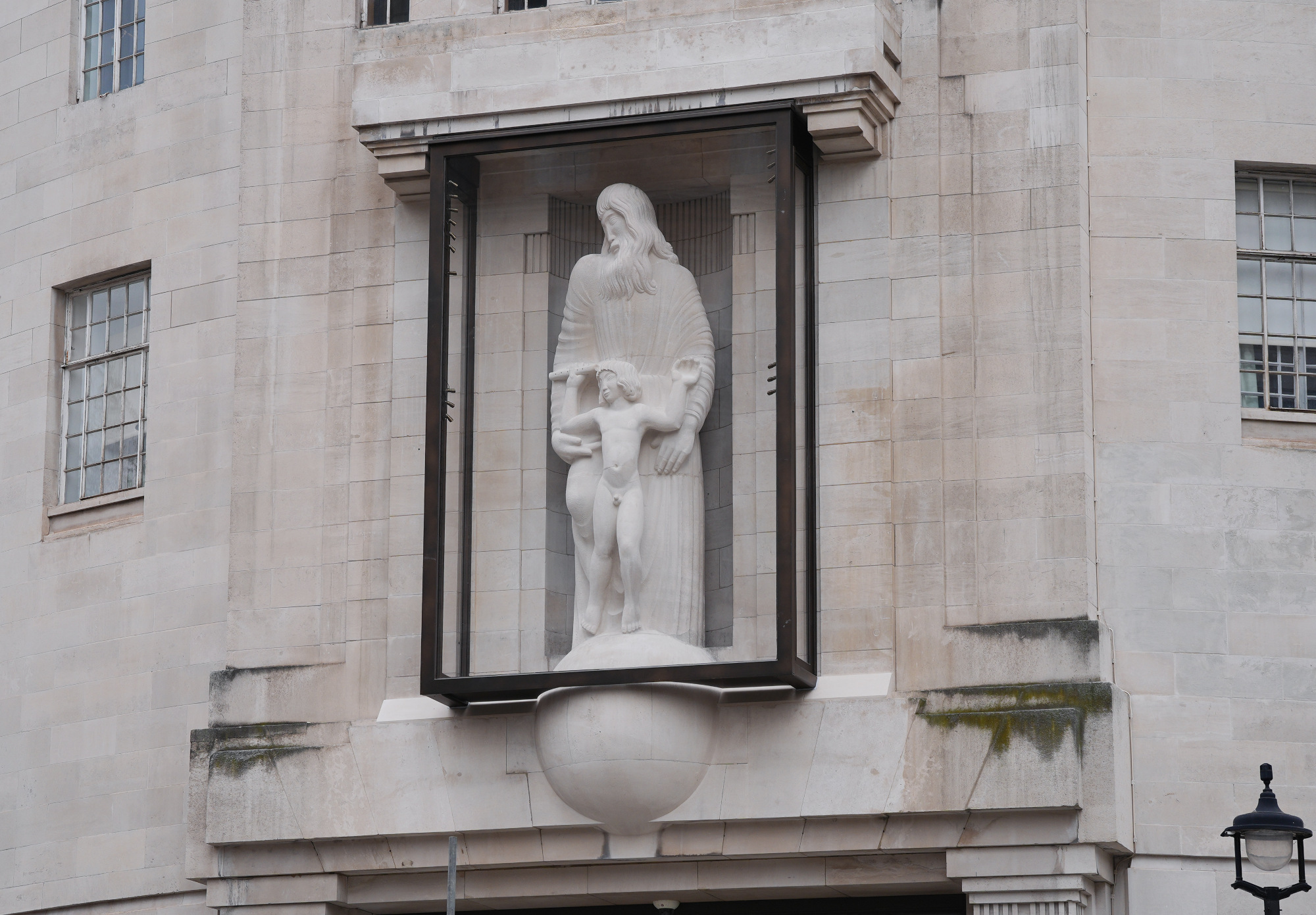The BBC is once again at the centre of criticism – this time for spending more than £500,000 in restoring the vandalised sculpture of Ariel and Prospero from Shakespeare’s play The Tempest, that adorns the entrance to its London headquarters Broadcasting House.
The statue was sculpted in 1931 by Eric Gill, rightly described today by both the Daily Telegraph and the Guardian as ‘a paedophile’ who not only sexually abused his two daughters and his sister – but had illicit relations with the family dog as well.
But along with his sexual deviance, Gill was arguably the greatest British sculptor of the 20th century, whose name lives on in the Gill Sans typeface font that he designed in 1928. A fervent Roman Catholic, he is also renowned for sculpting the Stations of the Cross in Westminster Cathedral. His hidden life of incest and bestiality was first revealed by his biographer Fiona MacCarthy in 1989, using Gill’s own diaries in which he confessed to his secret perversions.
Since then, Gill has been posthumously targeted by anti-abuse campaigners who say he should be cancelled and his work covered up or destroyed because of his offensive secret life. In 2022, the Ariel statue was attacked by a campaigner with a hammer, watched by Police who did nothing to stop the hour long attack. In 2023, it was attacked with a hammer again.
In a statement explaining their decision to restore the statue behind a protective vandal proof screen, the BBC said that in doing so they were not condoning Gill’s abusive behaviour to his family. The whole affair raises anew the age-old question of whether an artist’s questionable personal life can or should be separated from their work.
Very few artists have led private lives of unblemished moral probity, and some have been positively criminal. The great Italian masters Caravaggio and Cellini, for example, are both believed to have killed men in brawls, and the early 20th century Austrian expressionist artist Egon Schiele was briefly jailed for allowing underage girls to see his erotic paintings, with the judge burning one of his depictions of a very young girl. Yet the works of all three are worth millions today, and no one has yet suggested that they should be cancelled. If the only works displayed in galleries were by morally upstanding artists living virtuous lives, they would be practically empty.
Gill was undoubtedly an eccentric figure who flouted respectable social standards in his own lifetime. He favoured dressing in loose smocks with no undergarments, and people passing in and out of Broadcasting House while he was working on Ariel would have received something of a shock and seen more than they bargained for, had they happened to glance upwards.
Some authorities have already succumbed to the anti-Gill campaign. In my home town of Chichester a blue plaque marking the site of Gill’s childhood home, was removed on the orders of West Sussex County Council in 2022.
Others have so far stood firm: I used to live opposite Gill’s birthplace in Hamilton Road, Brighton, and when last I looked, the plaque recording his arrival there was still in place.
In making a clear distinction between a great artist’s works and his shabby private habits, for once the BBC has done the right thing.








Comments